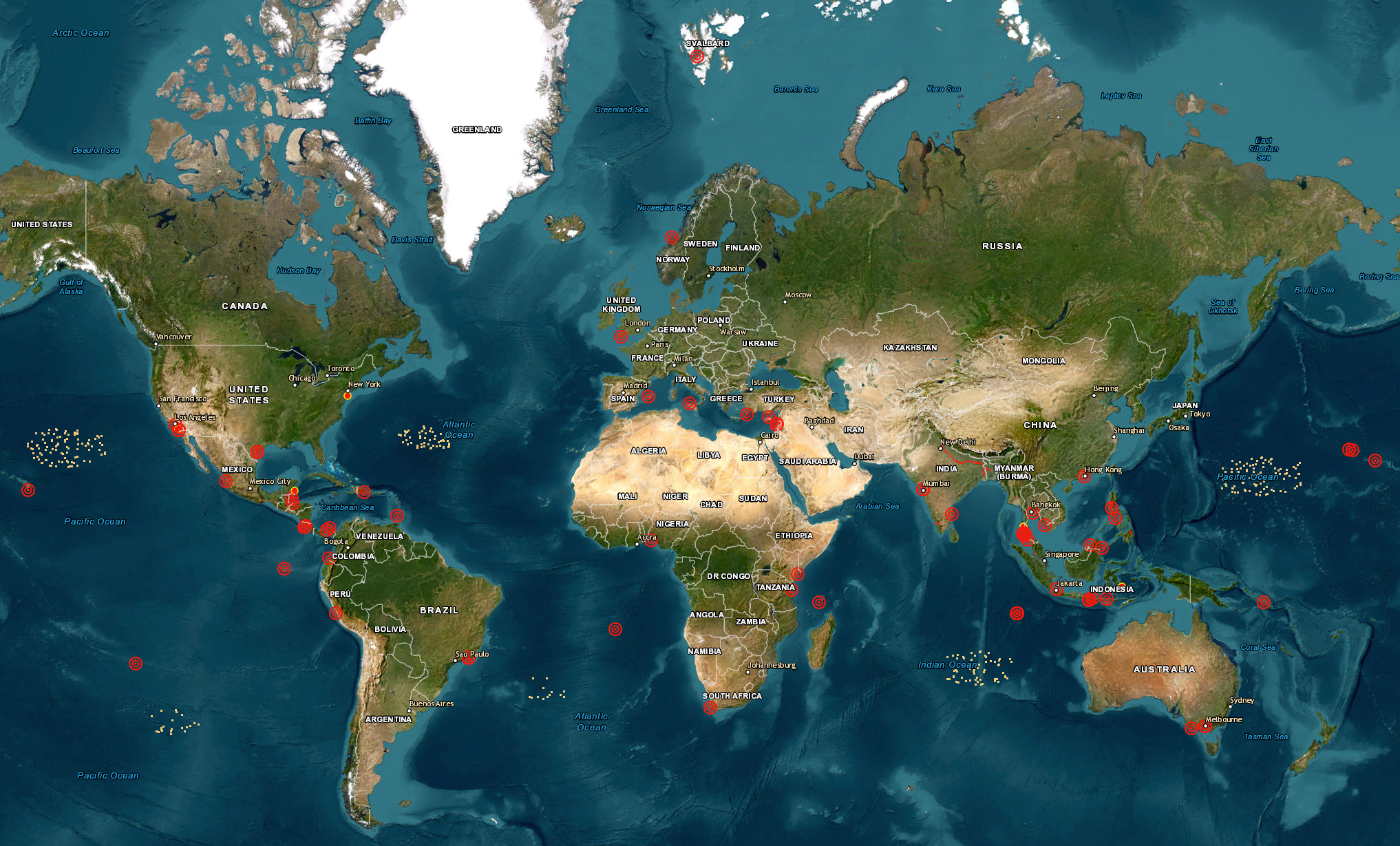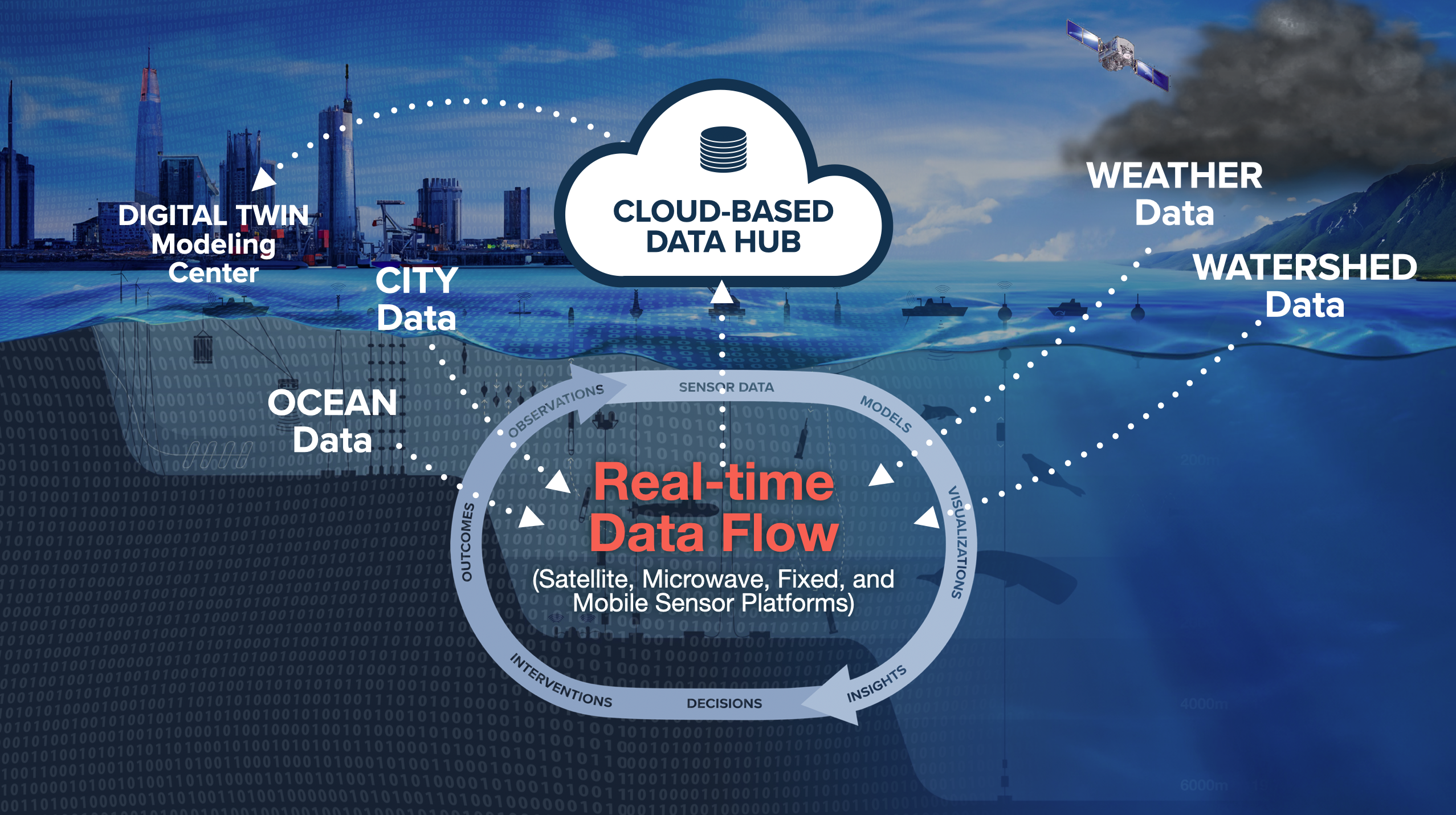- About
- Network
- Community
- Initiatives
- News
- Events
- Blog
- Publications

Next-Gen Stewardship of Urban Sea Systems: Balancing Economic Vitality, Environmental Decline, Homeland Security, and Social Justice
On Monday, March 25th, attendees and livestream viewers at CENIC’s biennial conference “The Right Connection” were captivated by noted oceanographer John Delaney’s presentation on the importance of the globe’s urban sea systems that are core to the economic vitality of nations. The stunning visual presentation presented a strong case for applying a next-generation approach to stewardship of these vital yet fragile natural infrastructures that support the world’s seaports.
Within 24 hours of Delaney’s keynote address, an errant cargo ship departing the port of Baltimore to the Chesapeake Bay urban sea system rammed and collapsed the Francis Scott Key Bridge, as if to provide a real-world emphasis of Delaney’s point about the vulnerability of our reliance on well-functioning coastal ports. That bridge collapse and resulting closure of the US’s ninth busiest port affects more than 15,000 jobs at a port that handled more than $80 billion in imports and exports last year.

Urban Sea Systems: The Major Hubs of Global Trade
An urban sea system as defined by Delaney is the interactive network of natural and manmade activities within coastal watersheds that harbor one or more major ports. Three such examples in the US include the Northwest’s Salish Sea that feeds the ports of Seattle and Vancouver; the San Francisco Bay, serving ports in Oakland and San Francisco; and, the Chesapeake Bay, serving ports in Norfolk, Washington, Baltimore, and points further north.
These sea systems are all part of the global trade network that exports and imports 95% of the world’s goods with surface shipping traffic while serving as terminals for many of the 99% of the global financial transactions taking place via underwater electro-optical cables. In 2021, such global trade was worth $28.5 trillion, which has made most port cities around the world very wealthy. As Delaney observed tellingly, “Most of you are now wearing or eating something that came here on a ship.”

The economic importance of these urban sea systems is matched by the environmental and social impact of the surrounding port communities they enable. Delaney noted that the world’s ports are sources of significant pollution of global waters and a threatening increase in contamination of seafood supplies with trace materials such as microplastics.
And sadly, as is the case with most centers of wealth, port cities also feature alarming social inequities in living conditions and opportunity. Rising sea levels threaten those living literally on the edge of ports and have the potential to force those living near them into climate refugee status, resulting in large-scale dislocations for hundreds of millions worldwide.
Seeing the Consequences Before We Act with Digital Twins
So how can we apply the strengths and potential of our computational disciplines to the complex management needs of urban sea systems? According to Delaney and his colleagues, digital twinning presents the ideal solution to the challenge of modeling these systems’ behaviors and as a result, modeling a different future than the one we seem heading for.
Digital twinning involves developing a computational model of a real-world system based on both historical and real-time information flows provided by a range of existing data sources and behavior models. Artificial Intelligence and Machine Learning (AI/ML) of course play a major role in digital twinning. Such modeling allows for scenario-building with up-to-date visualization of interactions between processes, allowing us to see the consequences of our actions before we act.

And as Delaney accurately observed, such visualizations, driven by AI/ML, are already being applied in disciplines as diverse as astronomy and plasma containment featuring extremely complex interrelationships and unpredictable behavior.
Cybersecurity Plays a Vital Role
Cybersecurity plays an incredibly important role in creating trustworthy digital twins of these strategically important port cities, of course. The consequences of not managing urban sea systems wisely will be global, and as such the solution must also be global. Without the assurance that such sensitive data can be stored, accessed, transferred, and processed securely around the world, the understandable political wariness to do so may be the biggest challenges to the creation of digital twins. As a result, ensuring watertight cybersecurity may be as important to this project as the models themselves.
Related blog posts
CENIC Members Bolster the Economy by Expanding Digital Literacy in California
Members of CENIC are working to improve digital literacy by supporting initiatives aimed at creating digital access for more Californians and by creating programs to enhance digital literacy once those people have been connected.
Ventura County Library Capitalizes on CENIC Membership to Provide eduroam Connectivity to Student and Faculty Patrons
By becoming eduroam Hotspot Operators, Ventura County Library and its branches offer the extremely valuable service of eduroam connectivity to its student and faculty residents.


